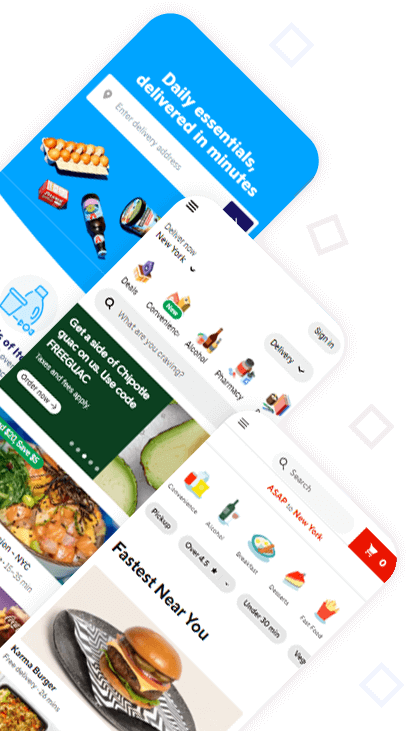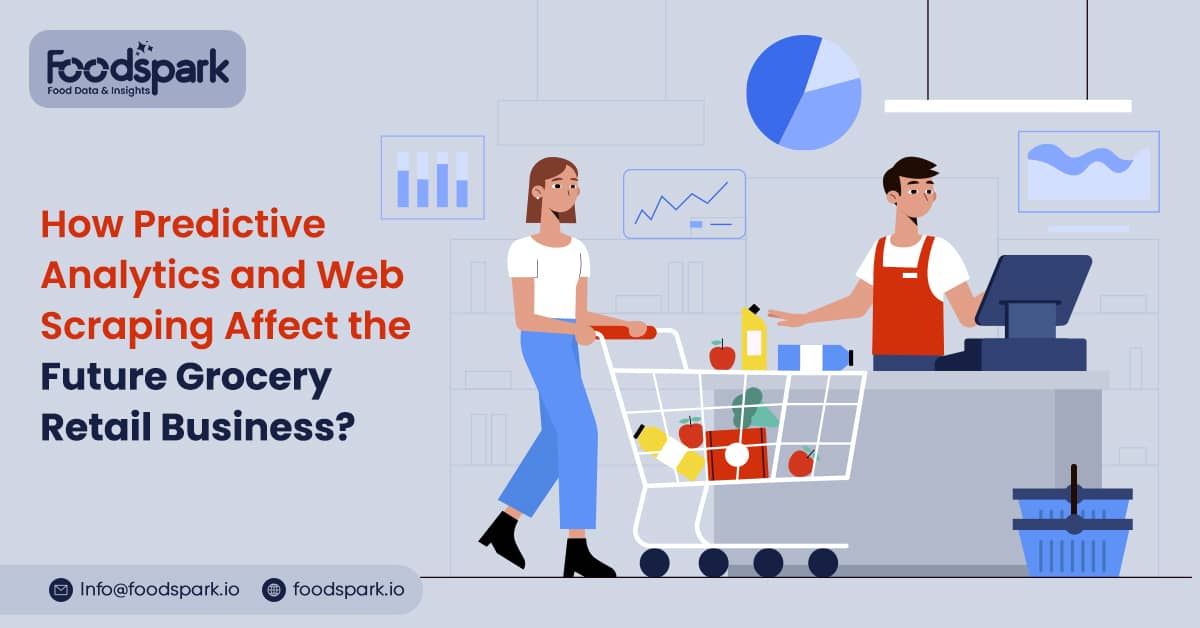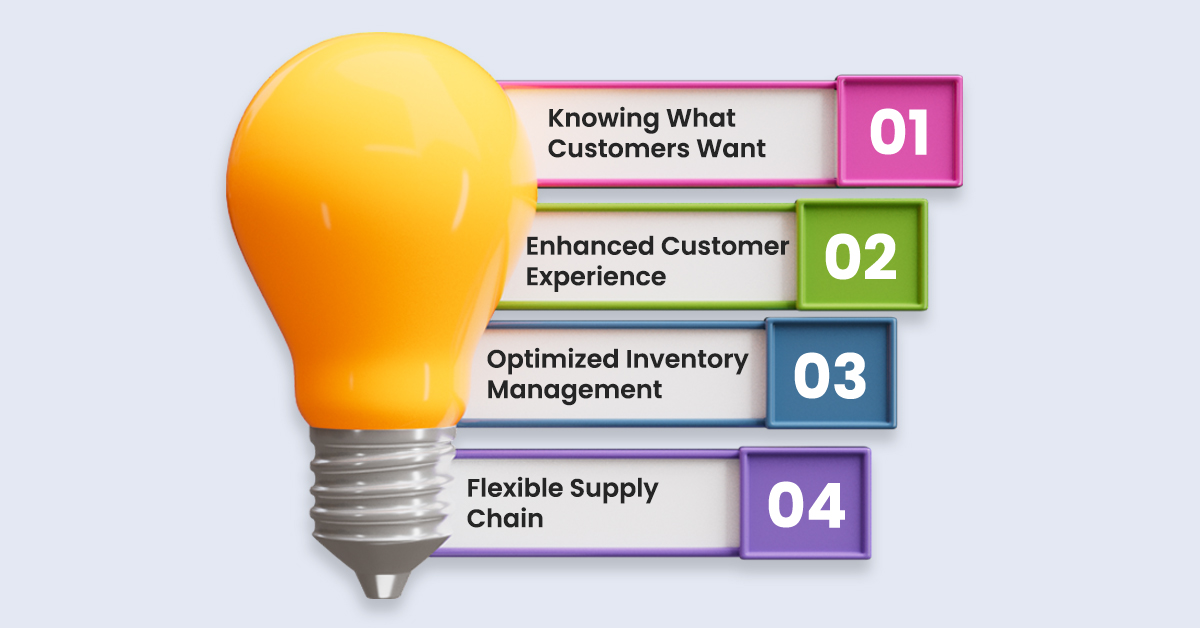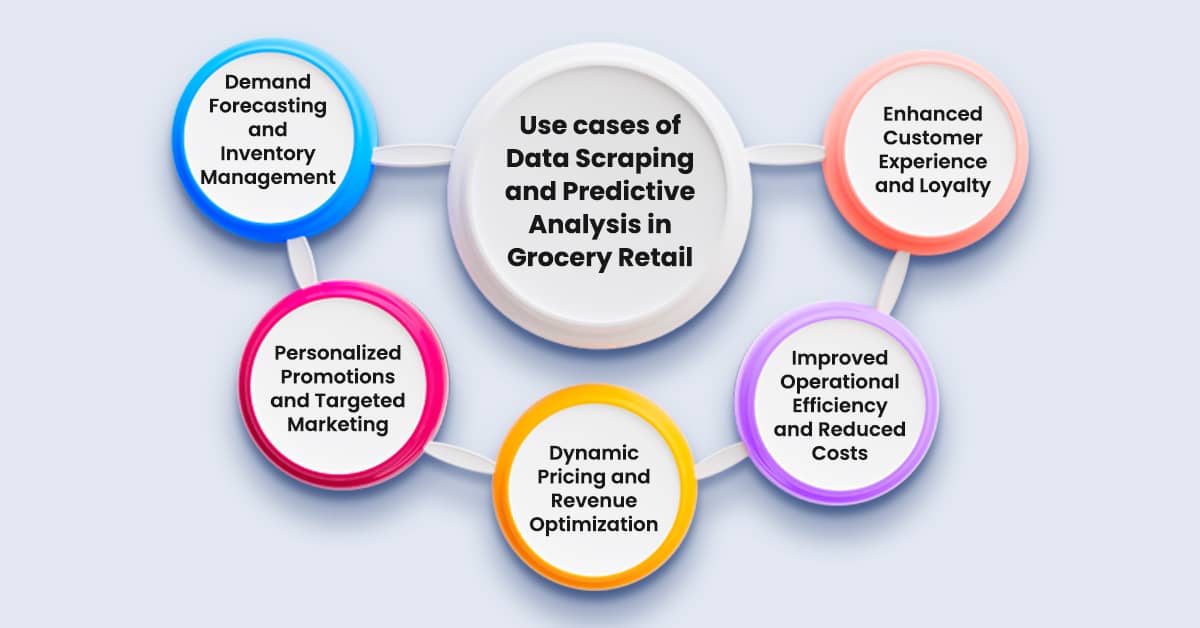Let's talk!
We'de love to hear what you are working on. Drop us a note here and we'll get back to you within 24 hours.

We'de love to hear what you are working on. Drop us a note here and we'll get back to you within 24 hours.

In the fast-paced world of retail, grocery stores are a lively and competitive business. They constantly adapt to what people like to buy and new technologies. Essential tools in this adaptation are predictive analytics and data scraping. These help stores make smart choices about what to stock, where to put products, and how to tell people about them. New technologies are changing how stores do things. Retailers that embrace these technologies stand to gain a competitive edge by understanding customer needs, optimizing inventory, and creating a more responsive supply chain.
Predictive analytics is a powerful tool that relies on looking at past information and using mathematical models to foresee what might happen in the future. It looks at patterns and uses math to figure out likely outcomes. This helps businesses plan ahead, understand what customers might do, and make good decisions based on what’s likely to happen next.
In grocery retail, predictive analysis means using data and math to make smart guesses about what will happen in the future. Stores look at past information, like what customers bought before, to figure out patterns. This helps them predict things like which products will be prevalent during certain times or events.
For example, if a grocery store knows that people tend to buy more ice cream in the summer, they can use predictive analysis to ensure they have enough ice cream in stock when the warm weather comes. This way, they can meet customer needs and plan better for the future.
Grocery Data Scraping is the automated gathering of information and insights from multiple web sources. This strategy enables businesses to collect valuable data from websites, competitor platforms, and other online channels, giving them a more comprehensive insight into market trends and consumer behavior.
Grocery data scraping services help grocery stores by keeping track of prices across multiple websites. This information is significant since it helps stores adjust their own rates in order to remain competitive and provide customers with the most significant discounts. It also allows stores to respond swiftly as the market changes.
Grocery stores can use data scraping to learn about new products, what customers think of them, and specifics about each product. This aids retailers in staying abreast of consumer preferences, understanding what’s in style, and making well-informed decisions about what inventory to stock.
When done correctly, web scraping grocery data gives the knowledge retailers they need to make strategic decisions, improve consumer experiences, and remain competitive in a continuously changing industry.

In grocery retail, data scraping and predictive analysis are essential. Grocery data scraping services by Foodspark help a lot because they can lead to big improvements in making customers happy, making the store run smoother, and making the store more competitive against others.
Predictive analysis and data scraping in the grocery retail sector have the potential to revolutionize the sector and improve many facets of it. First, it is anticipated that predictive analysis will completely transform inventory management. Retailers may more accurately predict customer demand by utilizing past data and market patterns. Second, data scraping is essential for remaining aware of changes in the market. This approach will advance further in the future, giving merchants access to real-time data from various sources, including supplier databases, social media, and rival websites.
Data Scraping: Gathering information from logistics partners and suppliers allows you to keep up to date on changes in the market and possible interruptions. Retailers can overcome obstacles and keep a seamless supply chain by taking a proactive stance.

The grocery retail sector is undergoing a change due to predictive analytics and web scraping grocery data, which is also changing how retailers run and engage with their clientele. Grocers may boost profitability and customer happiness by using these potent tools to get valuable insights into market trends, customer behavior, and operational efficiency.
1. Demand Forecasting and Inventory Management:
Imagine a grocery store employee using a tablet to check inventory levels. By using predictive analytics, which is like looking at past sales, weather patterns, local events, and what people are talking about on social media, the store can predict what products will be popular in the future. For instance, if a holiday weekend is approaching, and the weather is expected to be good, the store can use past data and weather forecasts to anticipate a higher demand for barbecue supplies. This helps prevent lost sales and keeps customers happy. Grocery data scraping involves looking at competitor websites and online marketplaces to gather important information like prices, product availability, and promotions.
2. Personalized Promotions and Targeted Marketing:
Predictive analytics involves studying what customers buy, their demographics, and how they behave online. By doing this, grocery stores can determine what customers like and predict what they might buy next. Imagine a grocery store sending a special email to a customer who always buys organic fruits and veggies. They might offer a discount on a new batch of locally sourced vegetables. This kind of personalized marketing makes customers feel more connected to the store and keeps them coming back. It’s much better than just sending generic coupons because the store understands what the customer wants.
3. Dynamic Pricing and Revenue Optimization:
Imagine a grocery store that uses super-smart tools to figure out the perfect prices for its products. These tools, called predictive analytics, look at real-time info about how much stuff is selling, what other stores are charging, and what’s happening in the market. The store also checks what other stores are doing with their prices. They do this by scraping info from other stores’ websites and online markets. It’s like peeking at what the competition is up to. This helps the store know when to adjust its prices to stay competitive.
4. Improved Operational Efficiency and Reduced Costs:
Now, let’s talk about how the store can become super-efficient. The predictive analytics tools also look at how the store runs its operations, like how many people are working, how much energy is being used, and how to reduce waste. The store doesn’t just stop at its own operations; it also looks at what’s happening around town. The store can learn about traffic, weather, and construction by scraping info from public sources like websites and government pages.
5. Enhanced Customer Experience and Loyalty
Now, think about how the store can make your shopping experience awesome. The predictive analytics tools check out what customers say and what they like or don’t like. If people complain about how things are set up in the store or the selection of products, these tools catch it. The store can then make changes to make customers happier and more likely to return. The store is also intelligent with social media. If people need help with long lines at the checkout counter, the store can use this information to improve. This way, the store stays on top of customers’ wants, ensuring everyone has a great shopping time.
Predictive Analysis and Data Scraping is not merely a technological enhancement but a revolution reshaping the industry’s future. The impact is profound and far-reaching as Foodspark stands at the intersection of cutting-edge technology and traditional retail practices. With its ability to forecast consumer behavior, optimize pricing strategies, and streamline supply chain operations, predictive analytics empowers retailers with unprecedented insights. The ethical and creative application of data scraping and predictive analytics is critical to the future of supermarket retail. In addition to utilizing these technologies’ revolutionary potential, retailers must commit to providing a safe and secure environment for their patrons. As the journey progresses, it becomes more essential to lead the way toward a future when ethical behavior and innovation come together to reinvent the grocery store experience completely.